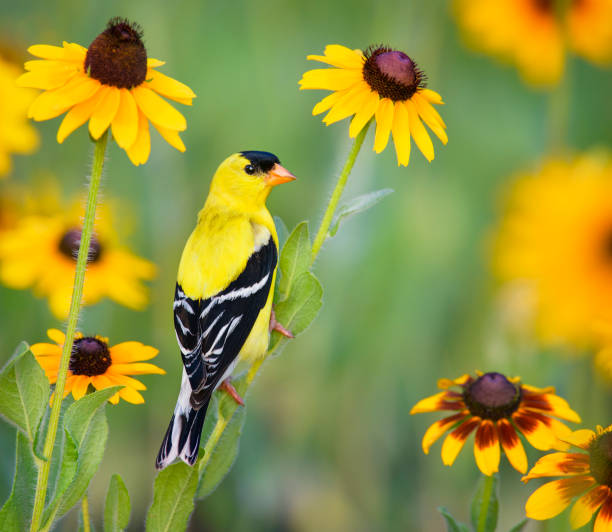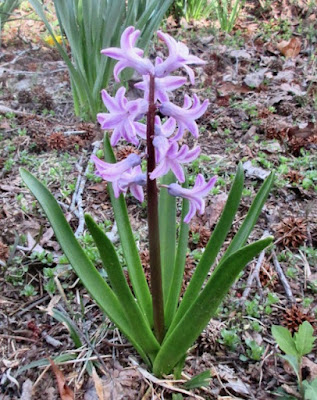Sorry I disappeared last week. It wasn't planned. I just didn't get on the computer much. It was just one day at first, then a 2nd, then a third, etc. Turned into a whole week.
Nothing wrong; I just got busy around the house and yard. Catching up on things... By the time I did lunch, reading the newspaper (lots of stuff to read when you get The Washington Post), doing yardwork, doing house cleanup (I've been slacking on that), recovering from the work, making dinner, some TV, etc. And all of a sudden it is time to get some sleep.
There is always something that has to be done before something else can be done. I couldn't do much last year after falling off the extension ladder and it is amazing how fast flowerbeds can go "all to hell" in a single year.
And one sad example was where I planned to plant the heirloom tomatoes. Too many years in the same spot, and diseases build up in the soil. So I decided to grow them this year in a new spot. The last few years, black-eyed susans grew there. Not my photo, but similar enough. I have them growing in various places and I have goldfinches.
But I wanted to save them into my developing meadow bed, so I spent time digging them up and moving them. They are hardy. After a week, all seem to be re-establishing themselves in the new spots. That job done, I dug the soil where I wanted to grow the tomatoes. The spot has an annoying runner-grass, so I had to dig deeply. I picked out all the runners I could find and then covered the area with black mesh landscaping fabric.
That should smother the runner grass. But mostly it lets water through the fabric and prevents splash-up from the soil onto the tomato leaves (which could infect the tomatoes). So, I laid down the fabric, set cages on top for spacing and poked a hole in the fabric to identify where the tomato seedlings would go. Set a small stake in each hole. Lifted the fabric and dug out a shovelful of soil into a bucket.
Mixed low N (too much nitrogen and you get "all plant no fruit") and some P and K and calcium into the bucket. Poured the mix back into the hole. Did that 11 times. With all the planting spots established, I laid the fabric back down and cut Xs in the planting spots (for setting the seedlings down in later).
Planting the seedling was easy, sort of. My knees down bend like they used to, so it was (grunt) get down, make a hole in the loose soil, set a seedling in, backfill the hole, set in a label, set in a 2' stake for the seedling to hold on to as it strengthens outdoors, and put a cage over it. My cages are 6" concrete remesh with a separate stake holding them up. Storm winds can blow an unstaked cage over.
11 times. I was worn out...
Then it was time to clear the flowerbeds. Too many overgrown shrubs! Several I planted years ago were described 5' tall and 3' wide. They were 8' tall and 6' wide. And sending up shoots from the spreading roots. They had to go.
It was like hacking a path through a jungle. The hedge-trimmer worked on the small outer branches, the more larger trunks needed a saws-all with a landscaping blade.

That was a brutal job and it isn't finished yet. But at least I got it down to where I can cut at the bottom. And pull the parts over the fence.
Which led to a day of hauling shrub and tree debris to the front yard to fill the 5'x8' trailer as high as I can tie it down safely for delivery to the County mulching site. They take yard debris and pile it up until it is compost and then give it away for free to any resident with a trailer. And will fill my trailer with finished compost for free on Saturdays. So what I bring to them, I get in return.
I filled some deck pots with cheap flowers from Walmart and Lowe's. It is nice to see flowers on the deck. I usually grow my own, but I was lazy.
And FINALLY, I topped the trailer with cut brush from several years ago that was sitting in the edge of the lawn in several places. Pulling the old debris from the vines that grew over them was a real fight, but I think I got them all. They are all kind of loose and high, but I I will tie them down side-to-side, front-to-back, and diagonally. I have added eyebolts and clips all around the outside of the trailer, so that gives me good tie-downs.
I'll have them fill the trailer with compost in return. That will go around the tomatoes and flowerbeds.
And then the fight with the spreading poison ivy and periwinkle will start! It's always something. Never mind the wild blackberries that are thriving in the far back yard. That is next week's problem to attack.
And I have 40 perennial seedlings to plant in the meadow bed.
I sometimes wonder that I get any sleep at all.
But I made










































